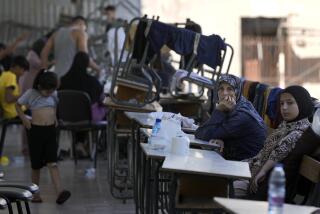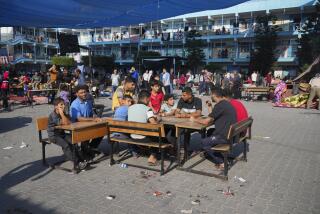Self-immolation persists as grim form of protest in Tunisia
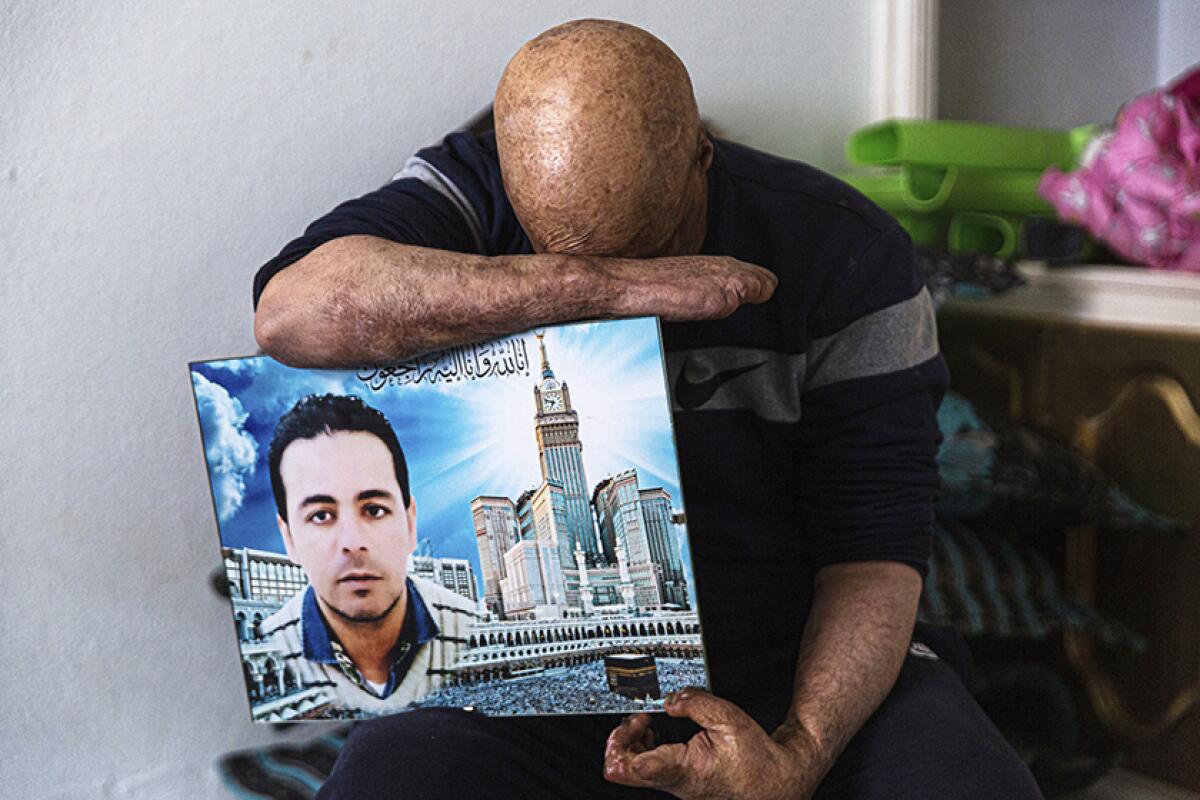
- Share via
KASSERINE, Tunisia — In his old life, Hosni Kalaia remembers strolling the streets of his hometown of Kasserine in central Tunisia with confidence. He flashed his heavy gold bracelets and rings, and puffed out his chest, broad and sculptured from regular workouts.
Today, Kalaia hides his face from the world behind dark sunglasses and beneath a woolen hat. On his left hand, three blackened, gnarled fingers protrude from one glove; on his right, he has none at all.
He lost them in the few seconds it took to disfigure his life forever, when — angry and distraught about the abuse and injustice he’d suffered at the hands of a local police chief — Kalaia doused himself in gasoline and set himself on fire.
He’s among hundreds of Tunisians who have turned to the desperate act of self-immolation in the past 10 years, following the example of Mohammed Bouazizi, a 26-year-old fruit seller in the town of Sidi Bouzid who set himself ablaze on Dec. 17, 2010, to protest police harassment.
Bouazizi’s gruesome death unwittingly unleashed mass demonstrations against poverty and repression, leading to the downfall of Tunisia’s dictator of 23 years. That in turn sparked the Arab Spring uprisings and a decade of crackdowns and civil wars across the region.
“I would never describe the act of self-immolation as an act of courage because even the bravest person in the world couldn’t do it,” Kalaia, 49, told the Associated Press in his family home. “When I poured the petrol over my head, I didn’t think very much, because I wasn’t really conscious about what I was doing. Then I saw a flash, I felt my skin start to burn and I fell down. I woke up eight months later in hospital.”
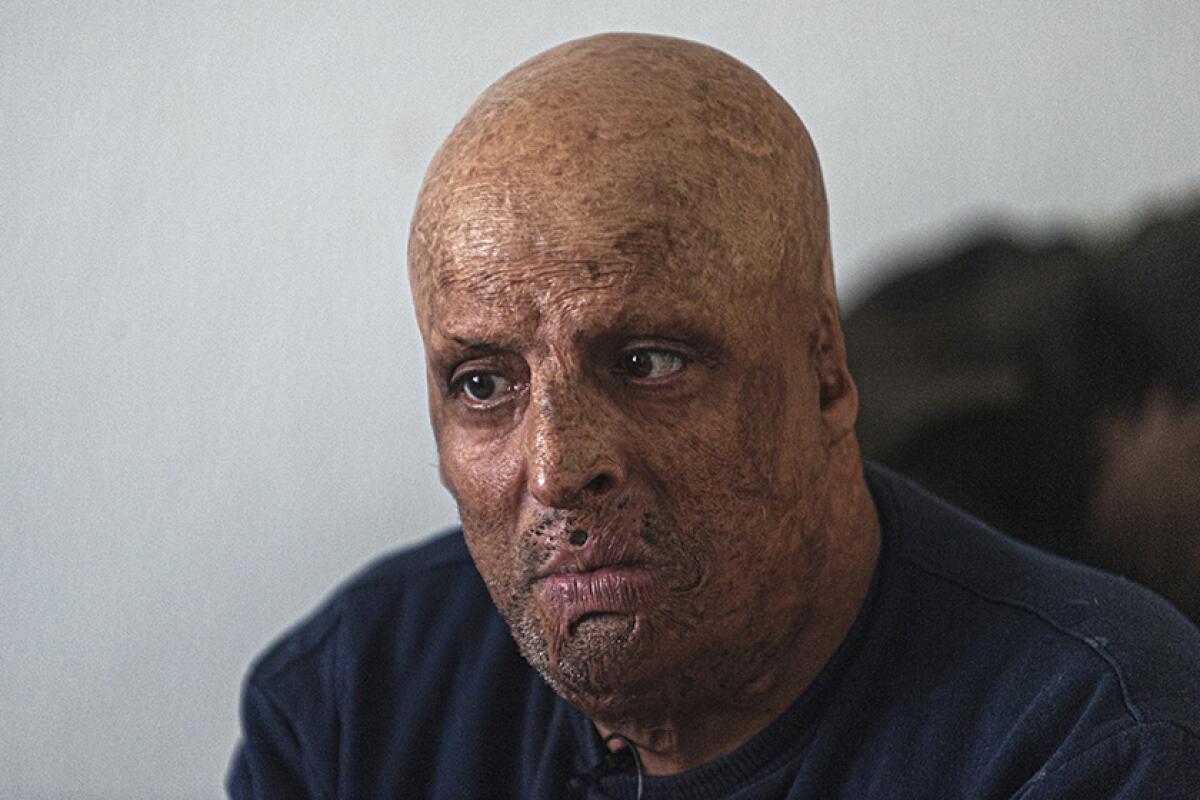
He says it hasn’t gotten any easier seeing the shock on people’s faces when he removes his hat and sunglasses. Rivulets of scars fray and splinter across his face and misshapen ears, and there are livid, deep welts on his arms and stomach.
His younger brother set himself ablaze too, killing himself, and his mother tried to do the same, their family a graphic reminder of the chaos and economic turmoil in this North African nation.
Most everywhere in the Arab world, the demonstrators’ dreams have been shattered. Tunisia is often considered a success story and a Tunisian democracy group won the 2015 Nobel Peace Prize, but while it has more civil liberties, free expression and political plurality, the country is plagued by an ever-worsening economic crisis.
Lack of socio-economic reforms, the devaluation of the Tunisian dinar and weak, inefficient governance have failed to alleviate poverty or fully revive investment. Amid the COVID-19 pandemic, unemployment has risen to 18%. Attempts to migrate to Europe by sea have soared.
“There is a huge gap between people’s aspirations and their means. It is this gap that pushes people further into misery,” said Abdessater Sahbani, a sociologist at the University of Tunis. “You can have a good job and be well-educated, but it doesn’t give you anything substantial.”
The number of self-immolations has tripled since 2011, and “the rise has persisted right into 2020,” said Dr. Mehdi Ben Khelil of Tunis’ Charles Nicolle Hospital, who studies the phenomenon.
After the revolution, Ben Khelil said, “there was a contrast between what we hoped for versus what we gained. Disillusion kept on growing.”
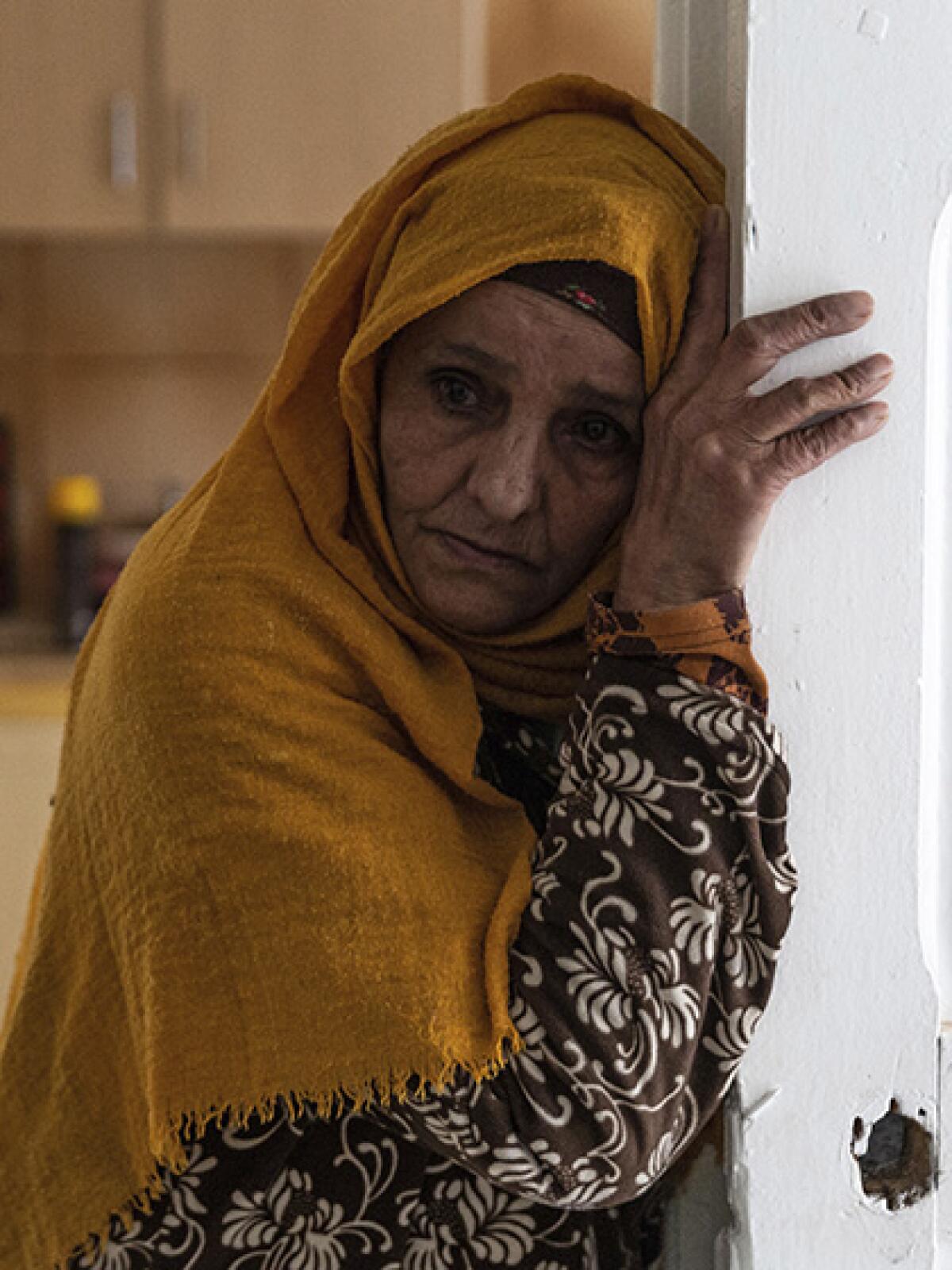
Although there are no official statistics, the Tunisian Social Observatory of the Tunisian Forum for Economic and Social Rights recorded 62 such suicides or attempts in the first 10 months of 2020.
Most occur near local administration or government buildings to protest financial insecurity and suffering, said Najla Arfa, project manager at the observatory. Police abuse is often a trigger.
The overwhelming majority are working-class men in their 20s and 30s, living in deprived interior areas such as Kairouan and Sidi Bouzid. Of 13 survivors contacted by AP, all said they needed financial help.
In the decade since Bouazizi’s suicide, little has changed in his hometown of Sidi Bouzid. Huddles of jobless young men sit chain-smoking on plastic chairs in cafés. Others stand in line to buy canisters of cooking gas after a strike disrupted supplies and forced people to use firewood.
With monuments in his memory, the town has become a shrine to Bouazizi, whose life resembled those of millions of other Tunisians. But not everyone regards his legacy positively.
“His act had a negative effect on the whole country and especially for Sidi Bouzid,” says 30-year-old accounting assistant Marwa Hamdouni. “I think only his family benefited. But for the governorate of Sidi Bouzid, the revolution did not bring anything good.”
In 2013, Bouazizi’s family moved to Montreal. Experts say that tales of his family gaining financially from his death spawned other such suicides, notably right after the revolution.
Ben Khelil, the doctor, says the reasons go beyond that: “Behind immolation, there is the desire to express their words and suffering. For certain people, the desire it not to die but to be heard.”
Survivors face immense psychological, physical and financial challenges.
“Some scars may heal badly and might hinder certain functions such as sitting, chewing and expressing facial emotions,” Ben Khelil says. “There can be a lot of persistent pain, especially when the scars are deep and touch the nerves.”
Kalaia spent three years in a hospital and then a private clinic recovering from his burns. He cannot hold a bottle of water, dress himself without assistance or fall asleep without medication. His arms are still riddled with infections.
“I’m not going to tell you I regret waking up, but dying would have been better,” Kalaia says, dragging on a cigarette. “Nowadays, I don’t think about killing myself another time, but I ask God for death because I’m so tired.”
The Quran forbids suicide, and many Muslim societies regard it as taboo. This does not prevent hundreds of Tunisians attempting it every year.
In 2014, Kalaia’s mother, Zina Sehi, now 68, tried to burn herself to death in front of the president’s palace in Tunis, protesting the government’s lack of support for the family. The next year, his 35-year-old brother Saber did the same, dying instantly. Kalaia blames himself for their actions.
The government created a committee to prevent such suicides in 2015, but political turmoil has led to a series of short-term governments that have taken little deep action to help survivors or their families.
“Do you see what this state did for me? It is the state that left me in this corner,” Kalaia says, gesturing to a mattress on the floor of his home where he sleeps. “It’s over, my life is over.”
More to Read
Sign up for Essential California
The most important California stories and recommendations in your inbox every morning.
You may occasionally receive promotional content from the Los Angeles Times.

